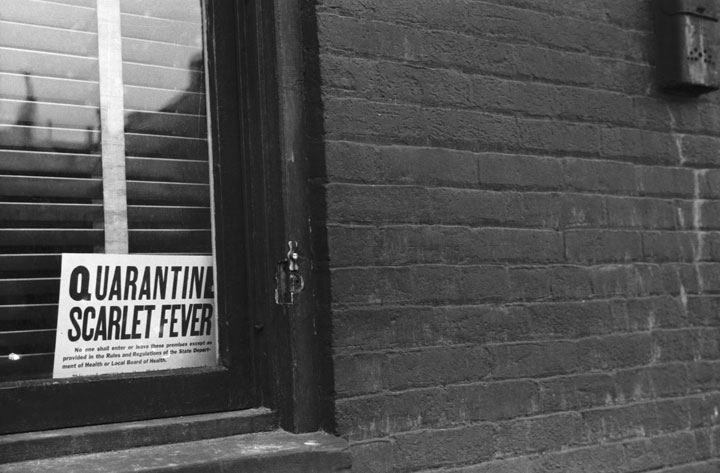Scarlet fever, the disease that sickened Little Women’s Beth, was a common childhood illness before the 20th century, causing many deaths.

But this staple of Victorian literary drama never really went away.
It lessened, of course – better hygiene, less crowding and the invention of penicillin all vastly reduced the number of cases, but there were always a few.
And in recent years, the number in the U.K. has been growing again: 9,887 cases during the 2018-19 season (up to May 10, 2019), with an average of 14,128 cases annually over the last five seasons.
A group of researchers think they may have found why: a new strain of the bacteria that causes scarlet fever. This strain, which the researchers described in the journal Lancet Infectious Diseases, produces more toxins, which makes it more likely to cause a fever.
What is scarlet fever?
Scarlet fever is caused by the bacteria Streptococcus pyogenes – the same bacteria responsible for flesh-eating disease, and the comparatively benign strep throat.
“Most people that get strep throat will get diagnosed. There’s a rapid test, or a culture or a swab of the back of the throat. They get some antibiotics, they get better, end of story,” said Dr. Isaac Bogoch, an infectious diseases specialist at Toronto General Hospital.
But sometimes, he said, the bacteria produce a toxin.
“So instead of getting the sore throat, you also get the sore throat and you get scarlet fever.”

Get weekly health news
The disease’s symptoms include fever, sore throat, a red rash, and a swollen red tongue, often called a “strawberry tongue.”
“The rash, when you feel it, it feels like sandpaper,” said Dr. Michael Silverman, chair of infectious diseases at Western University.
Scarlet fever is also very contagious, he said.
“If you look on the internet, there’s tons of old pictures. People would put up a sign, ‘Do not enter, scarlet fever in this home.’”
While it can lead to serious complications, a round of penicillin will cure the disease, and people even stop being contagious about 24 hours of taking the antibiotic.
“We feel it’s one of the few organisms we have where drug resistance has not been a major issue,” Silverman said. “Old-fashioned penicillin is still the best.”
Spike in cases
But when cases were rising in the U.K. around 2014, doctors weren’t sure what was going on, Bogoch said.
“One of the theories was, are these people getting the infection because maybe they’re just not having a timely access to care?” he said. “Or, is this something unique about the actual Streptococcus infection that’s causing more people to get scarlet fever?”
To figure it out, the researchers tested bacteria isolated from scarlet fever cases in a part of northwest London. They found that a specific strain was present in many of the cases. After further testing, they found that this strain produced more toxins than usual – and was probably more likely to make people sick with scarlet fever rather than just strep throat as a result.
“Given that this strain has an apparently enhanced ability to cause all types of Strep A infection, it is important to monitor the bacterium both here and globally,” one of the study’s authors, Dr. Nicola Lynskey from Imperial College London, U.K., said in a press release.
The bacteria and people are always in a battle, Silverman said.
“The strains keep trying to mutate, to be more efficient at being transmitted and staying in our throats,” he said. “And we get some immunity as time goes on and more and more people get infected, and then it’s harder for that strain to continue to maintain dominance and a new strain with new mutations may come out.”
For now, he doesn’t think Canadians should be alarmed, but he does think medical authorities should monitor how this strain of Strep bacteria spreads.
“Ideally, one day we will get to the point where we have vaccines for streptococci. And we need to be looking more at other solutions. But for now, those are not available.”
Bogoch says the study provides an interesting window into how diseases are constantly changing.
“This is like a microscopic Battle Royale. We don’t see it, but it’s happening all the time.”



Comments